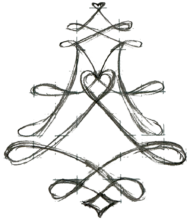This was going to be an ambitious day, or so the blueprint dictated. It would require an early bird start and then some gymnastics of navigating around half the surface of the shore of Lake Biwa, and then angle for one of the islands (Chikubu), then back to the starting point.
But I did wake up like a Dickensian character whose grandfather’s clock on the hall stopped working, and then had also forgot that it was the servant’s day off, and had to prep everything by himself. Finding matches for the fire, to get the hot water, the shaving kit, the matching of the socks, the porridge – without any seasoning, cause where is that even kept, and ‘oh, lord, look at the time,‘ – courtesy of my pocket watch, and then straight out the door, one boot on, one waiting for the strings to accommodate my foot, and ‘where are those blessed keys, now?‘ before the banging of the door restored quiet in the house. That is to say, dear Reader, I feel like when I left, I was certainly more presentable than the aforementioned Dickensian (wearing skirts is much more convenient), but equally burdened with the importance of my existence, and that thing called gravity. If you have a headache by now, imagine how I felt.
Alas, these little trifles are sent to challenge us, but nothing says ‘I shall persist, and prevail!’ like a train ticket to a somewhat remote destination. Well, off we go then!
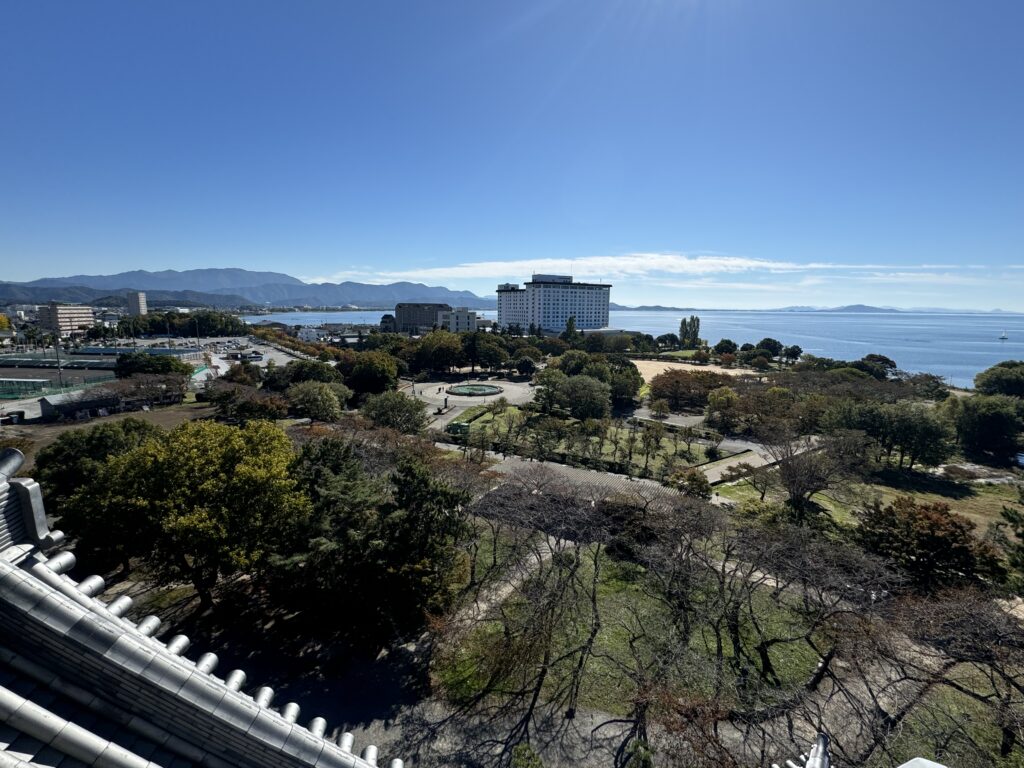
Lo! and behold, Nagahama, Shiga Prefecture, on the NE of Lake Biwa. Home to a lovely reconstructed castle and the lovely Hō park that turns fully pink in spring (cherry and apricot blossoms). This was one of the less populated spots during the trip and the number of tourists allowed for comfortable sharing of the viewing platform atop the castle, and the stroll around the city.
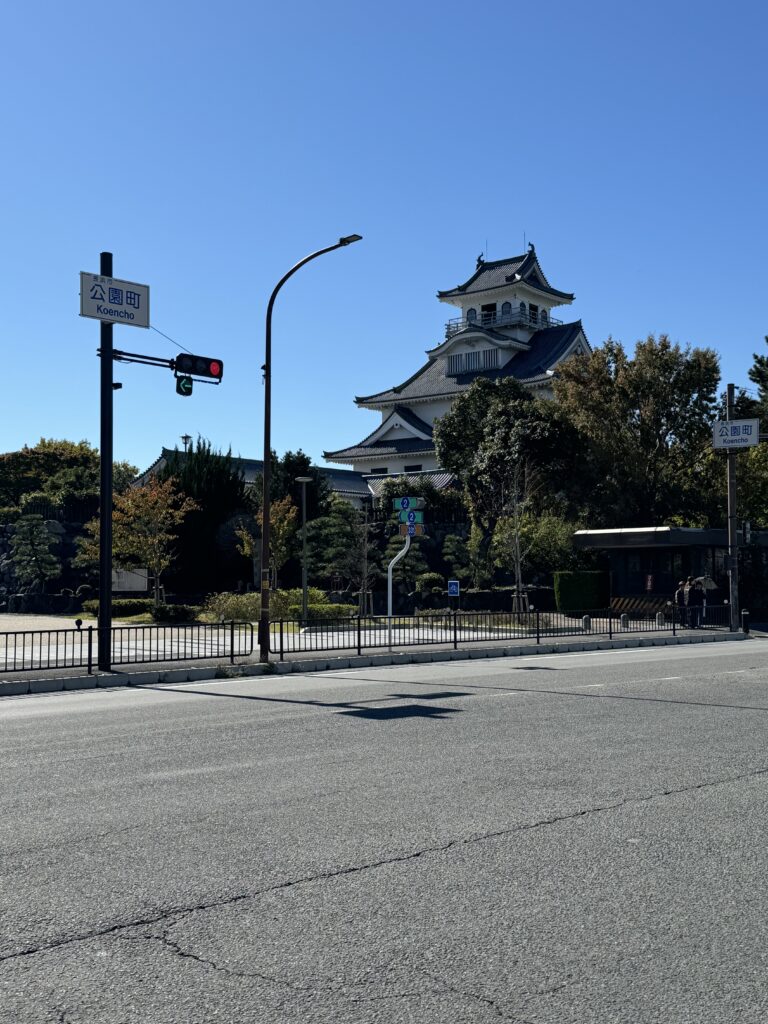
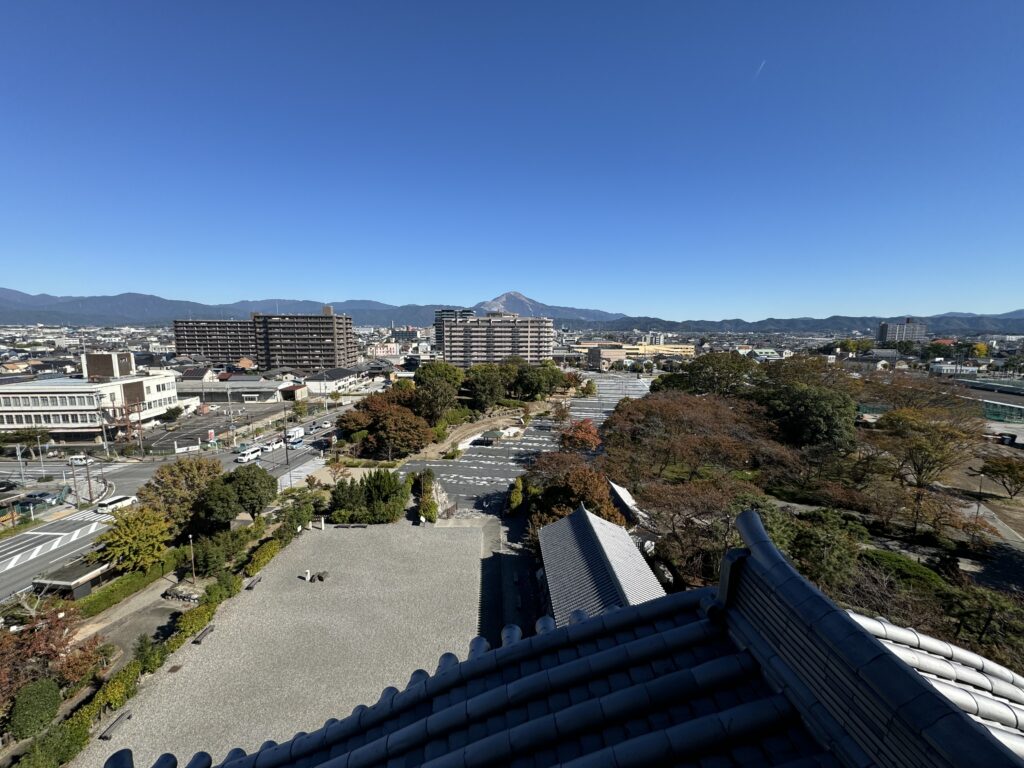
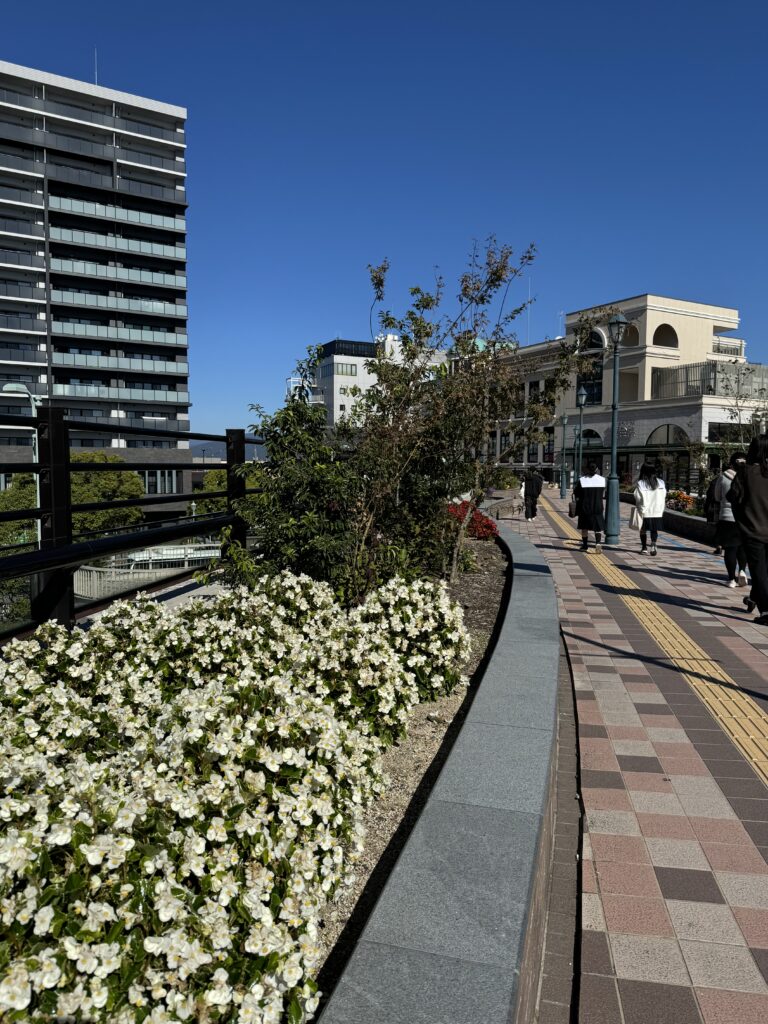
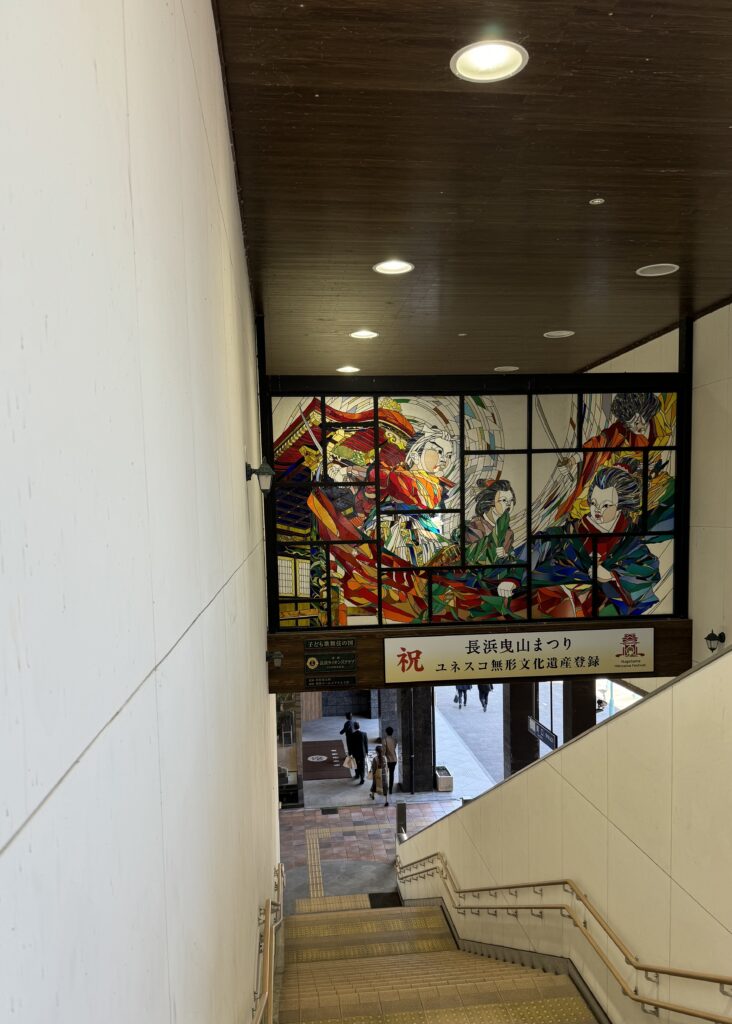
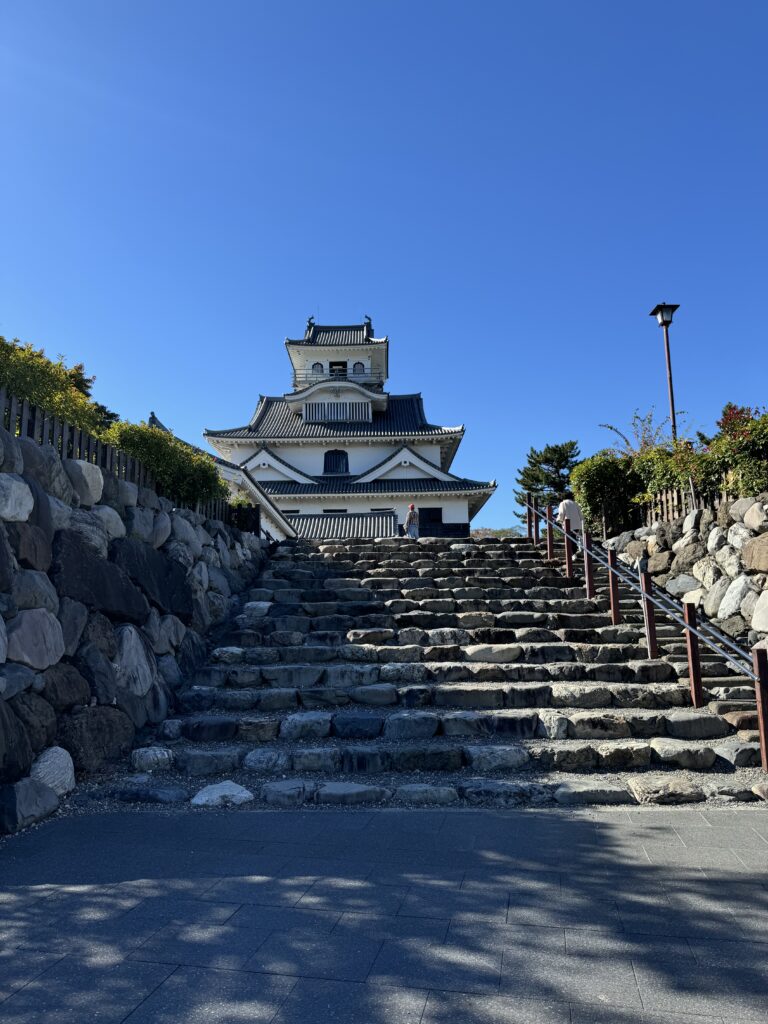
“No story is the same to us after a lapse of time; or rather we who read it
are no longer the same interpreters.”
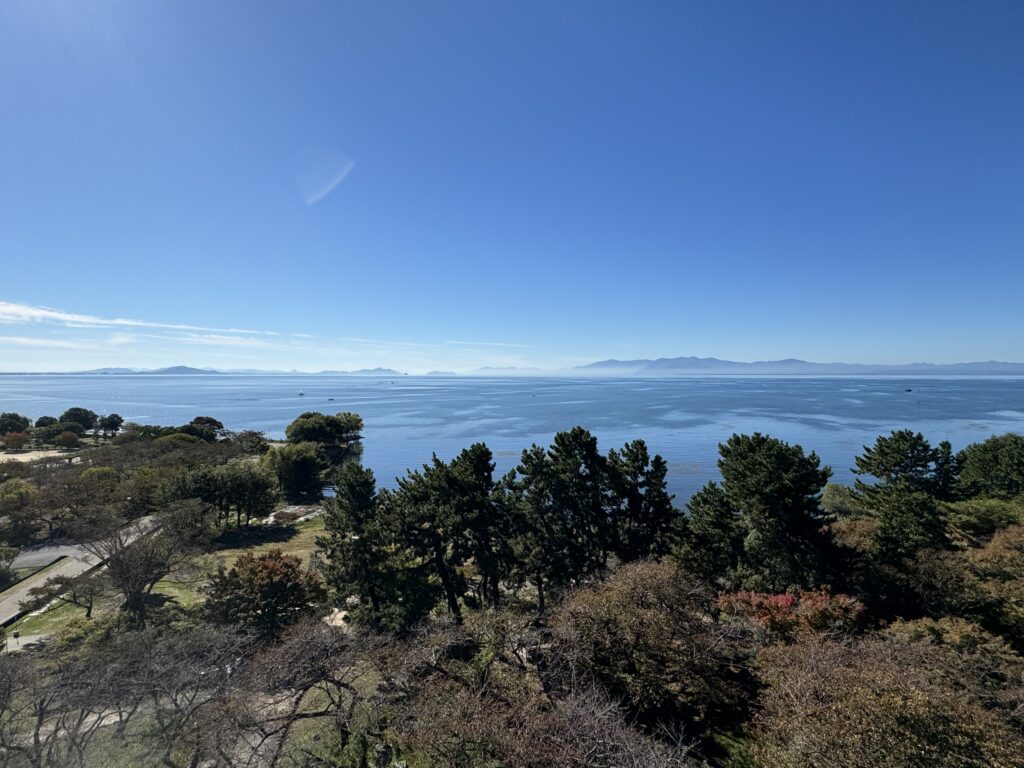
The original castle was built in 1577, or thereabouts by order of Toyotomi Hideyoshi, who used Nagahama as his administrative capital. Inside the castle there are 3D renderings of the process of construction as well as a chronological history of the region, going back to ancient times as early as Yayoi (1000-300 BC) and Jōmon (14.000-1000 BC).
There is a lot to be said about Toyotomi Hideyoshi, a samurai and daimyō, successor of Oda Nobugawa (the first lord to be called ‘Great Unifier of Japan’). His was one of the two most frequently encountered names of warlords during this trip – the other being the third Great Unifier, and Hideyoshi’s brother in arms, and successor, Tokugawa Ieyasu.
And here is where I’m reminded about language matters, the choice and use of words, and the interpretation they allow for; what is implied, what is meant to be inferred. Reading contemporary captions is sometimes like looking at an-otherwise-working table clock, which is missing one of its hands. You know the sound it makes; you know what it’s meant to say; you can see the playing field, and where the (absent) hand is meant to cast its shadow. Like the clock, the captions are meant to inform, and educate by providing a measure, a means to re-member. They also make us reflect on the present, and history-the legacy of the past, and what we did with it.
The captions inform us that Toyotomi was a great man. He did achieve the unification of the country, following Oda Nobunaga’s vision, but his dreams and ambitions did not stop there. Having a spare army, and lots of trained men in need of action, he set his sights towards Ming Dynasty China by way of Joseon (then, allies), first. The invasion and subsequent campaigns were as brutal as any war, and in the aftermath, the diplomatic relations between the two countries were always volatile.
Understandably, not all of this fits in the captions. But we do get glimpses here and there of a complex personality. Like, when at the birth of his son (later in life), he decided to rearrange succession, and ordered the death of his adopted son and nephew, and several women and children of his extended family.
Many a men have been tested in the face of adversity, and by having too much power. Or, for those under them, ‘enough’.
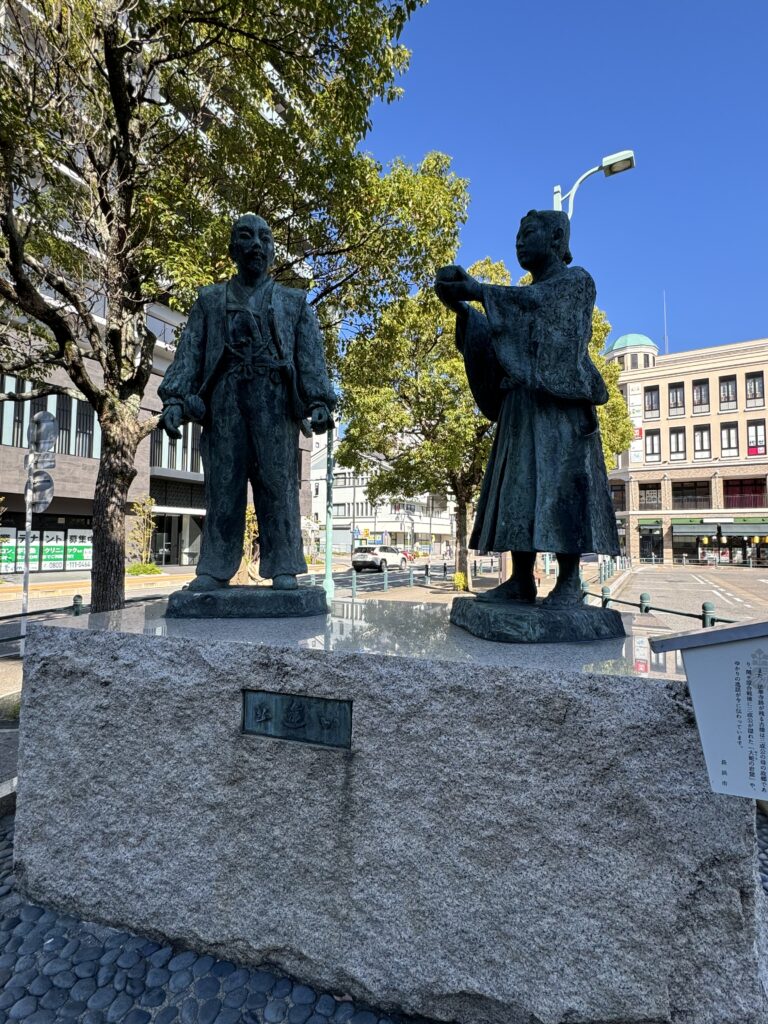
Having taken in the views from the balcony on the top floor, I decided to take a walk around and head towards Kurokabe Square and get a taste of the local stores. This town is renowned for its glassmaking, and the shops display many a sample of the talent and artistry of the local glassmakers. There were plenty of decorative ornaments for the Christmas tree, even glass reindeer, and other figurines to place on the shelves (since TVs now are flat, it’s hard to stick a lace doily and a crystal swordfish on top of it).
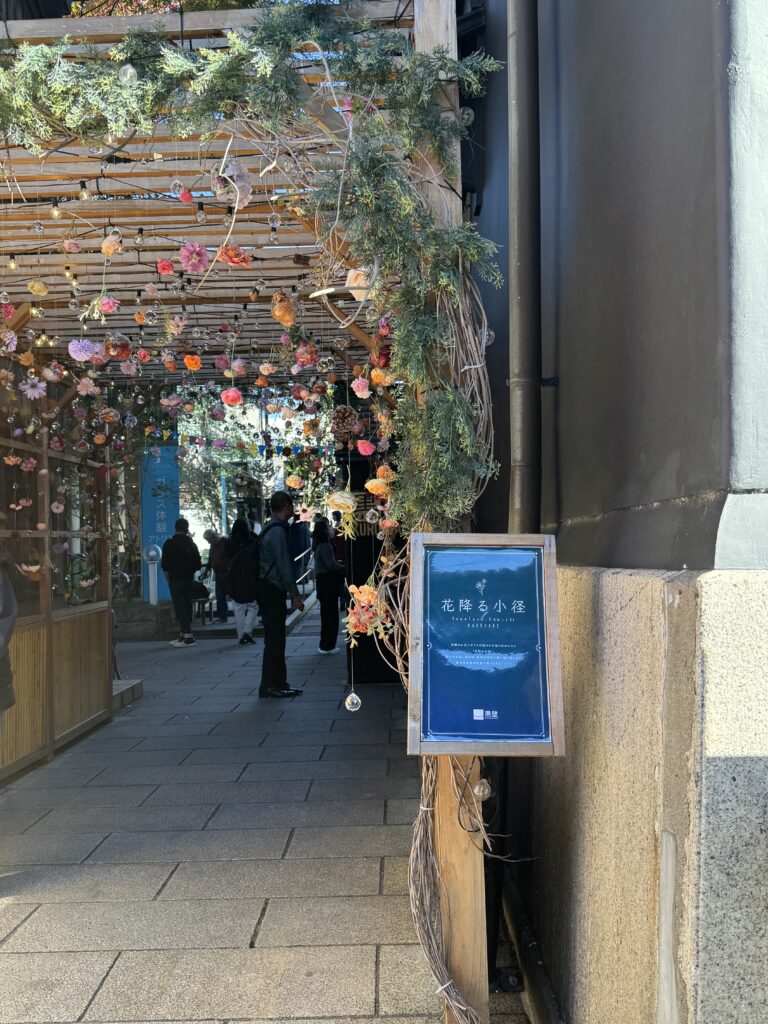
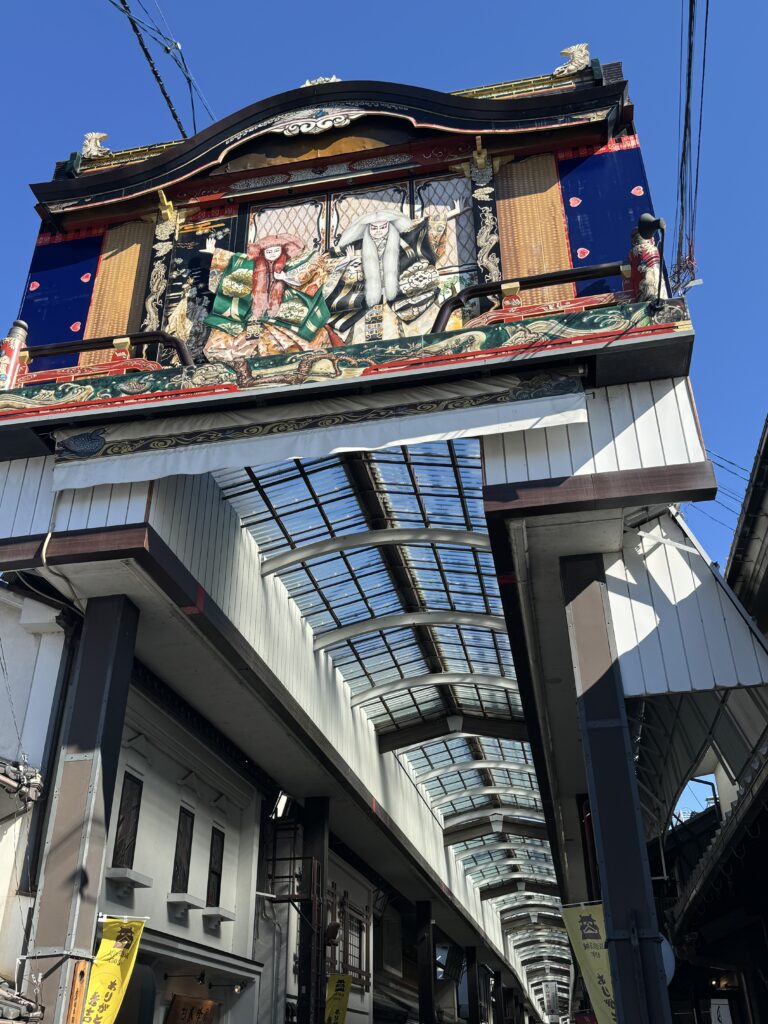
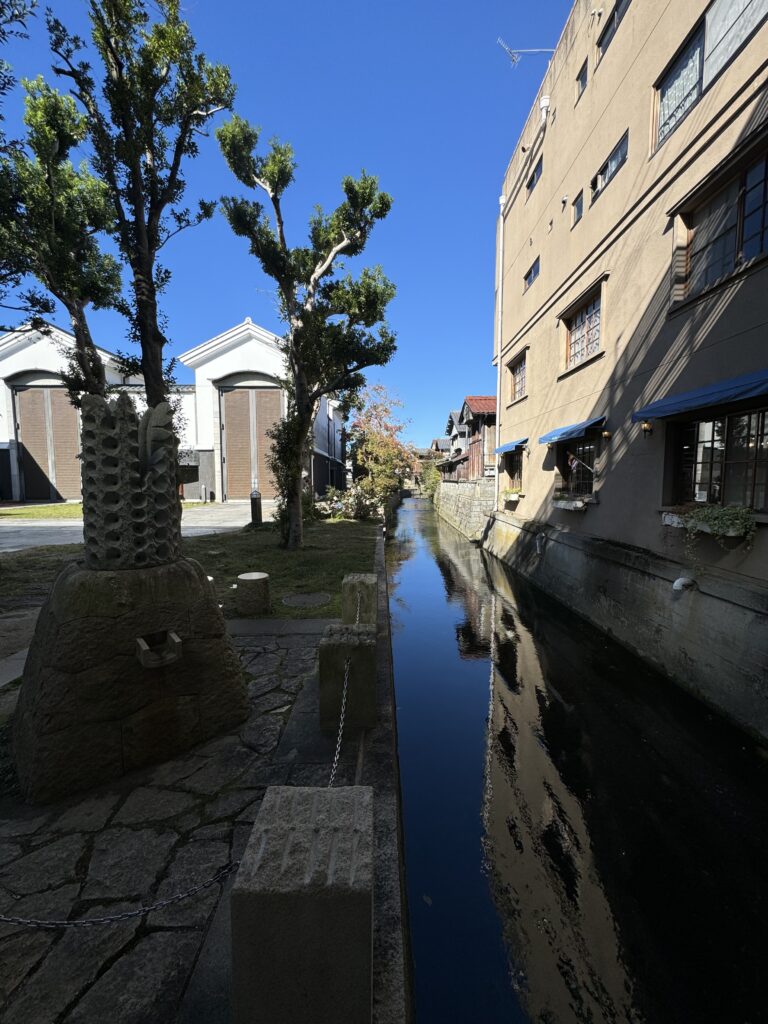
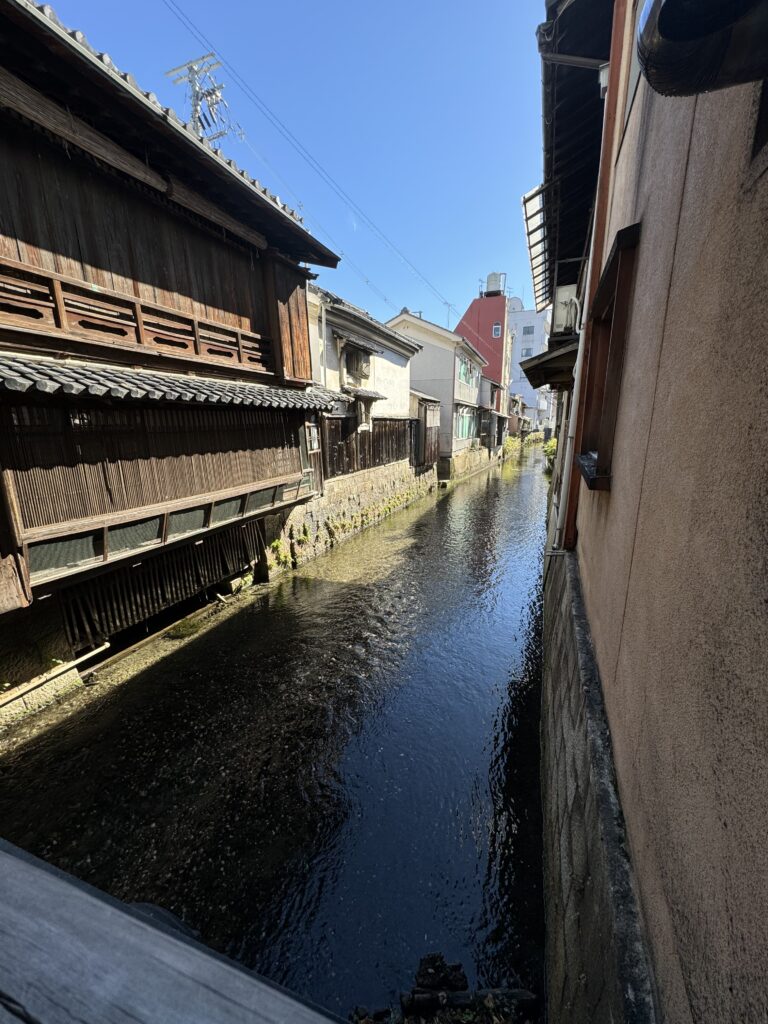
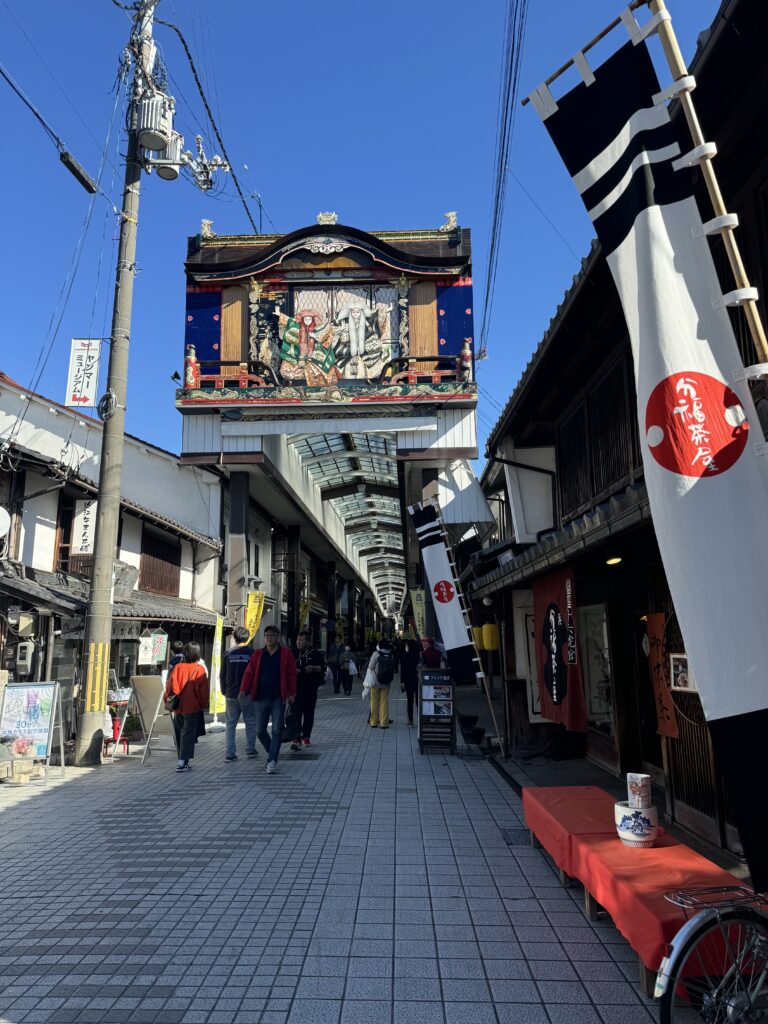
I did stir away from glass jewellery and homeware altogether, and opted for perishables in the form of sesame and plum powder tea, and some black sesame paste. I took a break at a lovely snack shop (Sugi) nearby, selling sweet potato and red bean mochi. Then slowly headed back to Kyoto.
It was a nice trip, and there’s more to explore around Lake Biwa, like Hikone, which has another castle or the island of Chikubu – boat trips are harder to coordinate, especially, if you haven’t made a very early start. There’s also Otsu, on the NW side of the lake, and further up on mount Hiei, the famous Enryaku-ji Temple. These will have to be delegated to future journeys.
